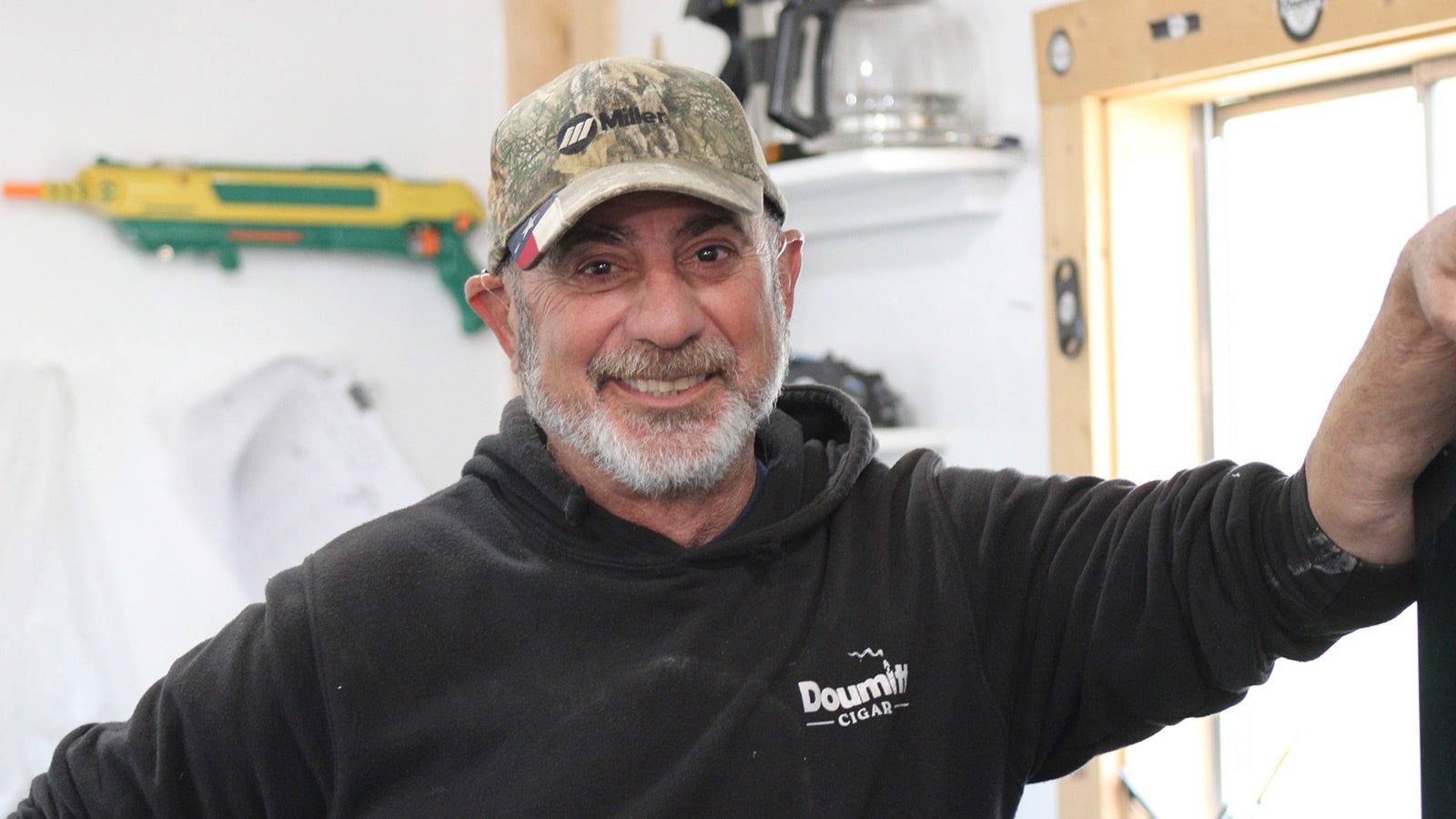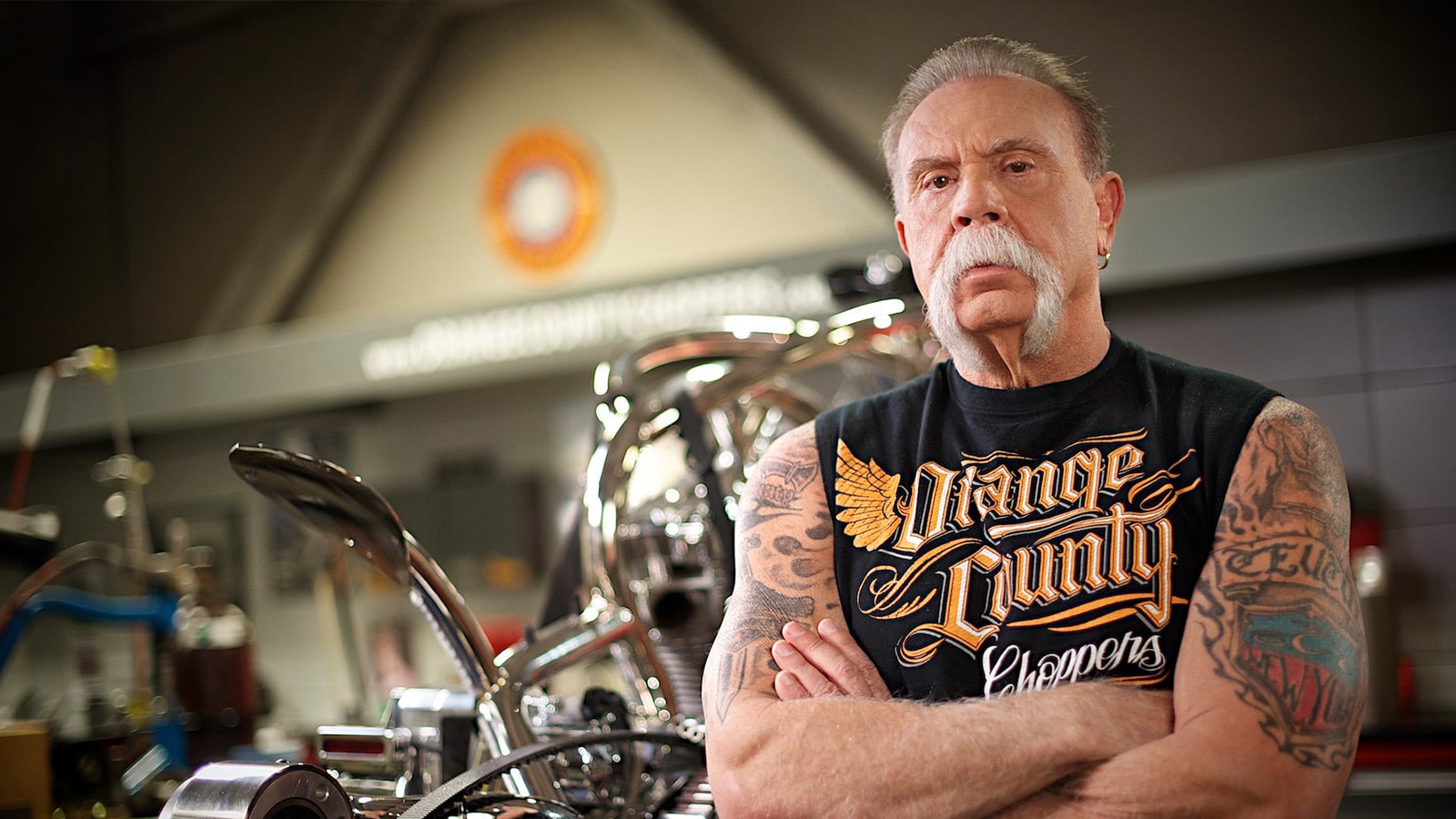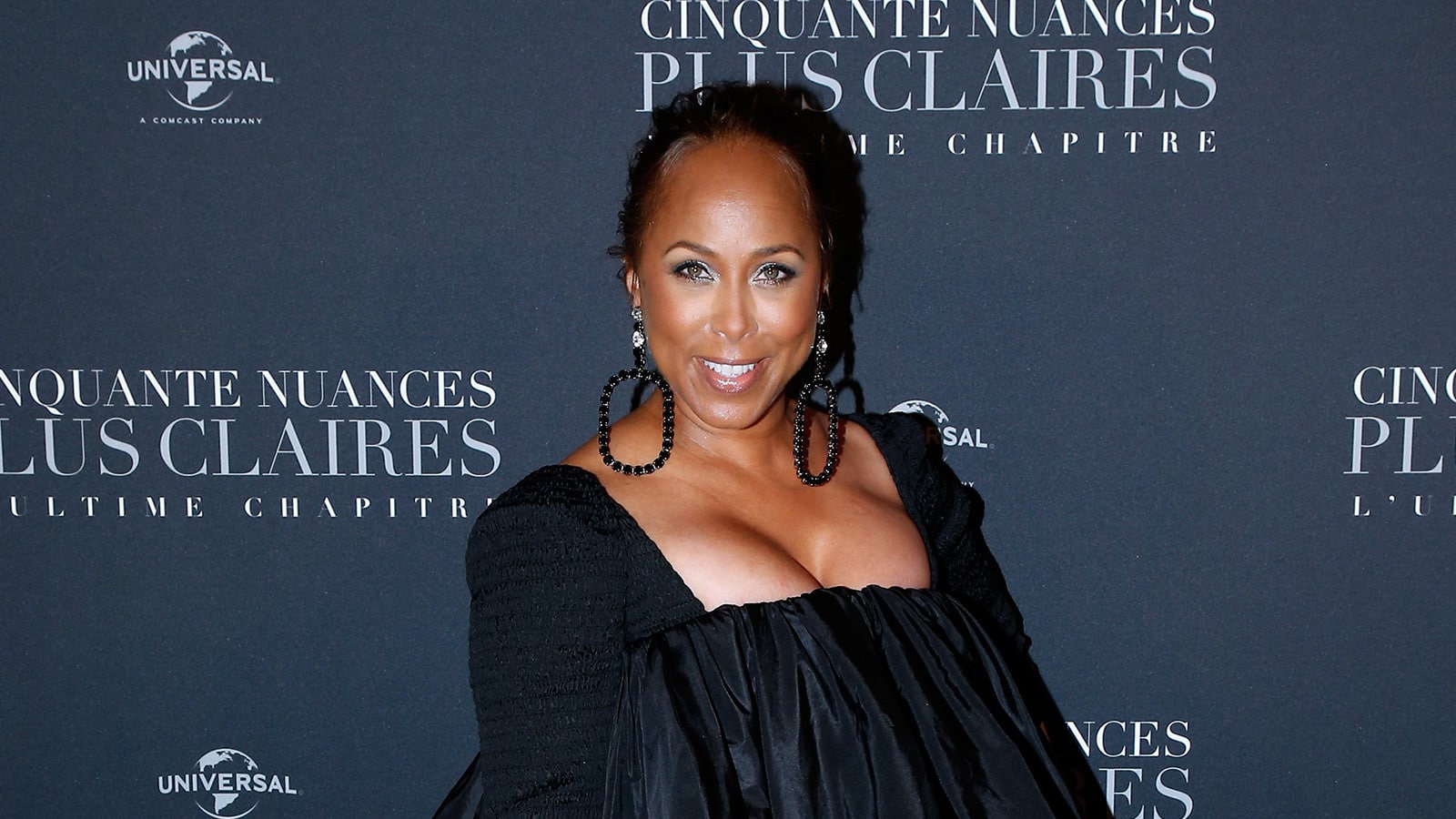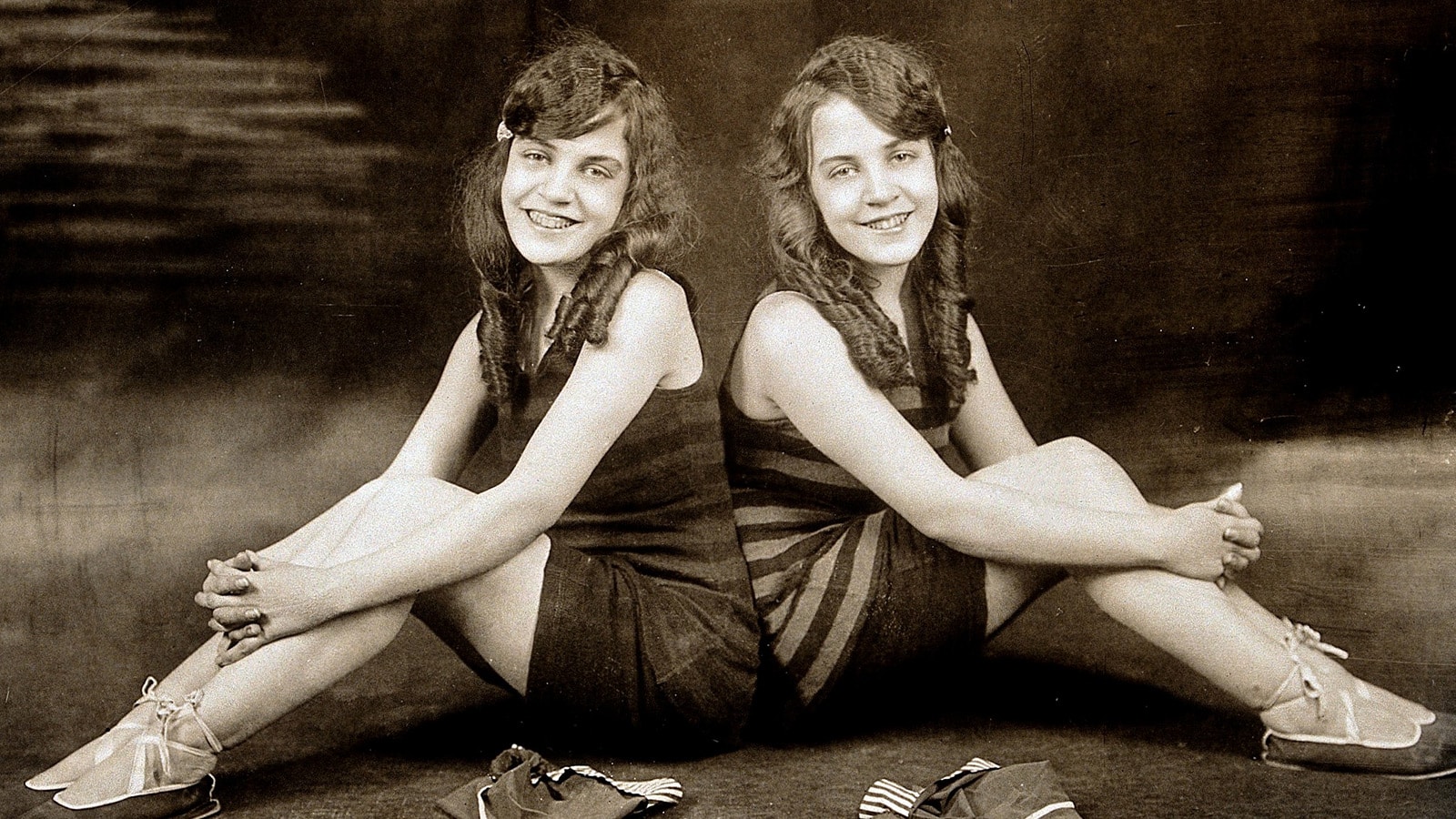Lists
Is “Love Is Blind” Too Good to Be True? Evidence That It’s Not

n 2020, Netflix released a one-of-a-kind dating reality series that had millions of users from all over the world glued to their screens, watching the experiment on which the show was premised play-out. Within weeks of its premiere, “Love is Blind” shot to the streaming platform’s number one trending programs, attracting 1.5 million viewers for its initial episodes, and maintaining the high viewership to attract 2.5 million viewers for its reunion episode. Since Netflix doesn’t offer a comment section, the show’s viewers took to other social media networks to discuss their thoughts on whether (or not) love is blind. The different views that the discussion attracted lead to the question, is “Love is Blind” too good to be true? Keep watching to find out what psychology and biology say about the show.
Contents
Premise
“Love is Blind” has a unique format. Fifteen men and women are selected and isolated from the rest of the world, kept in a secret location with all the amenities except their phones, computers, and any other device they could use to communicate with any other people besides each other, or use to learn anything about each other. The men and the women stay in the same chambers separate from the other gender, and only interact through pods that allow them to hear each other but not see each other. Every couple gets a few minutes in a pod before switching to speak to other people.
Once two people get to know each other and believe they are falling or have fallen in love with each other, they become engaged, and are only then allowed to see each other for the first time. The engaged couple then proceeds to a resort for a few days, before going home to meet each other’s families and friends and plan their wedding. The second most important day in the show, second to the day a couple says its first words to each other, is the wedding day. The show’s producers ensure that the participants understand the weight that their choice at the altar carries for their future, and with this understanding in mind, couples are asked to decide whether love is blind at the prompting of their wedding officiant in front of their families, friends, and guests in the full glare of the cameras.
The Science of Love
Nick Lachey hosts the reality series alongside his wife Vanessa. At the start of each season, Nick repeats the same phrase about a belief held by psychologists that the key to longevity and success in marriage is a strong emotional connection, not physical attraction. While many discredit the statement as an attempt at sensationalism, to get the show’s audience to believe in the premise of “Love is Blind,” his claims are backed by science.
In 2013, the American Journal of Sociology published a study evaluating the relationship between communication and connection among 900 couples in heterosexual relationships. The couples featured in the study were part of a speed-dating program, and the study found that it took a couple an average of four minutes to establish a strong and meaningful relationship. Furthermore, communication was a more significant indicator of a couple’s level of connection, compared to their physical appearance. The study’s findings provide a psychological foundation for the approach that “Love is Blind” employs to help participants find love.
The environment the show creates for participants speeds up the process of falling in love; this phenomenon is founded in biology. Falling in love and experiencing new things both activate the same part of the brain that releases dopamine. Attempting to find love in a novel environment under the watch of the entire world floods the brain with twice the dopamine, triggering the brain to fall in love faster. Biology may confirm that “Love is Blind” contestants are kept in an environment that makes them fall in love faster, but this raises a crucial question, “Could the dopamine rush be misleading the show’s participants into believing that they are truly in love?” We think not. The following couples prove that the participants fell genuinely in love, and the dopamine rush just escalated the process of falling in love.
Lauren and Cameron
It’s impossible to talk about the successful couples from “Love is Blind” without mentioning Cameron Hamilton and Lauren Speed-Hamilton, who participated in the pilot season of the show. They met for the first time in 2018 in the pods, after struggling to find love. Lauren chose to participate in the show to find a partner who wasn’t attracted to her for her looks, while Cameron wanted to find true love after picking the wrong people by focusing on their looks rather than personalities. Since Lauren and Cameron are both introverts, the pods allowed them to get to know each other without the inhibitions and pressure of dating in the real world. After five dates in the pods, Lauren and Cameron were ready to spend the rest of their lives together.
When the two became engaged, well-wishing fans wished them prosperity while skeptics followed keenly, looking for any indication that their relationship was either staged or superficial. The couple proved them wrong by maintaining the strong emotional connection they had built in the pods, long after leaving the facility. They met and established relationships with each other’s family and friends, and talked about their future. When Lauren walked down the aisle towards an emotional Cameron 40 days after their first conversation in the pods, there was no doubt in the minds of everyone watching that they would say “I Do.”
https://www.instagram.com/p/Cou8sBdOKqr/
Today, five years later, Lauren and Cameron are still going on strongly. While they appear to be as in love as they were at the beginning of their relationship, they don’t approach love and marriage with rose-colored glasses. They are open about the hard work and sacrifice it takes to build and maintain a happy and fulfilling marriage. The couple is planning to expand its family soon, and is actively trying for a baby.
Amber and Barnett
Lauren and Cameron may be the couple that has made most skeptics believe that love is blind, but the show has produced several other happy couples – Amber and Barnett immediately come to mind. Unlike Lauren and Cameron, who instantly knew they were meant to be, Amber Pike and Matt Barnett walked a longer route to find each other. Matt was getting to know more than one woman, and was torn between Amber and Jessica. When they got together eventually, their different approaches to financial management threatened to split them up. Fortunately, they worked through their differences, said “I Do” at the altar, and have been married for five years.
Alexa and Brennon
The second and third seasons of “Love is Blind” brought new participants for viewers to love and get behind. Several couples stood out, reminding fans of the great love story between Lauren and Cameron. Unfortunately, only one of the three couples has stayed together until now. Alexa Alfia and Brennon Lemieux are the picture of devotion and shared values, although ironically, they come from different religious and cultural backgrounds. They demonstrated a rare and soft connection, never raised their voices at each other, and offered mature advice to other couples who became engaged in the show’s second season. They joined the successful couples who came before them in confirming that love is blind, by saying “I Do” 40 days after their first meeting and have remained devoted to each other in the two years since they filmed the season.
Love Is Blind's Alexa and Brennon – Are they still together now? https://t.co/4RQuCIHMpU pic.twitter.com/B7chBClmq7
— Digital Spy (@digitalspy) October 27, 2022
Verdict
Clearly, “Love is Blind” has produced couples who have defied all odds, and silenced critics by falling in love with their partner’s personality and values, forging a strong emotional connection, and putting in the effort to stay together and make their respective marriages work. Although the start of their respective relationships was unconventional, the couples the go through the stages of a regular relationship, such as meeting each other’s friends and families, planning a wedding, discussing their living arrangements, finances, and children, and living together. Their success alone is proof that the show is not too good to be true.
However, the show has produced several failed relationships that disintegrated before the couples made it back from the resort, even at the altar when one potential partner said “I Don’t,” or ended in divorce after successful weddings. The high number of failed relationships and broken marriages would prove that the show is too good to be true if they didn’t reflect a similar state of marriage and relationships in the real world. In the United States, where the show is set and draws participants from, an estimated 41% of first-time married couples end up divorcing. Therefore, the few failed relationships alongside the successful ones prove that “Love is Blind” is not too good to be true. Ultimately, as in all relationships, only time will tell how long Lauren and Cameron, Amber and Matt, Brennon and Alexa, and the couples who said “I Do” in the recently concluded Season 4 actually stay married.
Lists
From Carpenter to Gold Rush – Who, and how rich is Chris Doumitt?

Chris Doumitt is a well-known figure in the world of gold mining, mostly due to his appearances in the popular reality TV show “Gold Rush.” Chris has had a fascinating life journey from being a carpenter to becoming a gold miner in the Alaskan Gold Rush. Throughout his career, he’s faced numerous challenges and obstacles, but his determination and perseverance have helped him overcome them all. Chris’s journey is a testament to the fact that with hard work, dedication and a little bit of luck, anyone can achieve success in life.
Contents
Chris’ early life and career
Chris Doumitt was born and raised in the Pacific Northwest, in Portland, Oregon, spending most of his early life on his family’s farm, where he acquired his strong work ethic. He fondly remembers his days on the farm, reportedly learning to drive a tractor before he could see over the windshield. Growing up, he was an outdoors enthusiast, spending a lot of his free time hiking, fishing and camping in the nearby mountains and forests. He was also interested in firearms, and later taught gun safety as an instructor at the Sandy Police Department.
After matriculating from high school, Chris started working as a carpenter, building and renovating houses in the Portland area, continuing for 25 years before any idea of changing professions occurred to him. His journey to becoming a gold miner began when his friend, Greg Remsburg, asked him to build a cabin for him in Alaska; at that time, Greg was employed by the Hoffman family as a construction expert. Initially Chris was only supposed to stay in Alaska for 10 days, but his trip was prolonged to five months, over the course of which he learned about gold mining from Todd Hoffman and his crew. In the end he was hired by Todd, who was impressed by his skills as a miner.
At that time, Discovery’s “Gold Rush” was just getting started, and Chris found himself as one of the original cast members as part of the Hoffman crew. He stayed with the Hoffman crew through the first three seasons, but then left, returning in season four as part of Parker Schnabel’s crew, and has stuck with them until today, becoming one of the most significant members of the crew and a highly skilled gold miner.
Aside from his career as a gold miner and a television personality, Chris has also launched his own line of premium cigars – Doumitt Cigars; he started his company with Harry DeWolf who shares his passion for cigars, and now features a range of handcrafted cigars made from high-quality tobacco leaves sourced from various countries, including the Dominican Republic, Nicaragua and Honduras. The company has received positive reviews from cigar enthusiasts and critics alike – its high-quality tobacco, traditional techniques and stylish packaging have made it a popular choice among aficionados. Chris’s passion for cigars and attention to detail have certainly paid off, as Doumitt Cigar continues to attract a loyal following of fans.
Gold Rush
“Gold Rush” is a popular reality TV series that first aired on the Discovery Channel in 2010. The show follows several mining crews as they search for gold in remote locations across North America, including Alaska, Yukon, and Oregon.
The show features a diverse cast of miners, each with their own unique personalities and skill sets. Some of the main cast members over the years have included Todd Hoffman, Parker Schnabel, Tony Beets, and Rick Ness. Each of these miners leads their own crew, and they face various challenges and obstacles as they attempt to extract gold from their mining sites.
One of the show’s central themes is the high stakes nature of gold mining. The miners must invest significant amounts of time, money, and resources into their operations, with the hope of striking it rich and making a profit. However, the unpredictable nature of the industry means that success is never guaranteed, and miners must navigate a variety of obstacles and setbacks in their quest for the precious mineral.
The show has also had a significant impact on the gold mining industry, inspiring many viewers to take up gold mining as a hobby or a career. It has helped to raise awareness of social issues associated with gold mining, including the impact of mining on the environment and local communities.
The show is filmed on location at various mining sites across North America, with crews facing harsh weather conditions, equipment breakdowns, and other challenges in their work. The breathtaking scenery of the remote locations adds to the show’s appeal, and viewers are treated to stunning views of mountains, forests and rivers.
Over the years, “Gold Rush” has become a cultural phenomenon, attracting a massive following of fans around the world. The show’s thrilling action, compelling characters, and educational value have all contributed to its popularity. “Gold Rush” has also been praised for its realistic portrayal of the challenges faced by miners in their work, and for raising awareness of the environmental and social issues associated with the gold mining industry.
The show has faced some mild criticism on its portrayal of the industry, but despite that “Gold Rush” continues to be a fan favorite, with viewers tuning in season after season to see their favorite miners in action. The show has also spawned several spin-off series, including “Gold Rush: Parker’s Trail” and “Gold Rush: White Water”, which follow some of the main cast members as they take on new mining challenges and adventures.
“Gold Rush” is a thrilling and informative show that provides viewers with an inside look at the world of gold mining. Its exciting action, captivating characters, and educational value have made it a beloved favorite among fans, and it continues to be a popular and influential series in the reality TV genre.
Chris Doumitt’s love life and family
Chris has been married to Sharon for nearly five decades, and the couple have two children together. However, their marriage has faced some very difficult challenges over the years.
One of the most significant was when Sharon was diagnosed with multiple types of cancer. Chris has spoken about how difficult this time was for their family, and how they had to put their personal and professional lives on hold to focus on her health. Fortunately, Sharon recovered by 2017 and is doing well today.
Around that time, Chris had health issues himself, as he’d injured his back while gold mining. He underwent a successful back surgery, which fixed all his problems.
https://www.instagram.com/p/B15TKNDHFHW/
However, that wasn’t the last of challenges in Chris’s life. That same year, his truck was stolen, and with it his passport and credit cards. However, luck didn’t leave his side for too long, as his truck was found shortly afterwards, as the person who stole was arrested in Slave Lake, Alberta. He was able to reclaim his possessions, but his truck was totaled by the insurance company, as the cost of returning it was higher than the vehicles worth.
Chris Doumitt Net Worth
Chris’s success as a television personality on “Gold Rush”, coupled with his cigar company, has allowed him to live a rather care free life. He is reportedly paid $25,000 per episode of “Gold Rush”, and his net worth has been estimated at over $400,000 in 2023.
Conclusion
Over the years, Chris has established himself as a skilled miner and successful entrepreneur, with a range of business ventures outside of his mining activities. Despite the challenges he has faced in his personal and professional life, including his wife’s battle with cancer and the loss of his equipment, Chris has remained determined and focused on achieving his goals. Through his hard work and dedication, he has earned the respect and admiration of his colleagues, fans, and viewers of “Gold Rush.” Chris Doumitt’s legacy as a gold miner, entrepreneur, and reality TV star will undoubtedly continue to inspire and entertain audiences for years to come.
Lists
Meet Teams Competing For $500,000 on “Race to Survive: Alaska”

USA Network launched its newest survival competition series, “Race to Survive: Alaska,” on 3 April 2023. Eight teams of two took on the hardcore challenge of a 46-day, 300-mile race in volatile weather and inhospitable terrain for a chance to take home $500,000. With that much prize money at stake, viewers could expect the competition to be quite intense. In the Alaskan wilderness, however, it was not simply a race but a matter of survival, and this added a great deal of excitement to the reality show. The caliber of the contestants would have been top-notch for them to qualify in the game, so it would be pretty interesting to see how each team fared.
Contents
- 1 All about “Race to Survive: Alaska”
- 2 Meet the teams
- 2.1 Jeff and Hunter Leininger – Father and son duo
- 2.2 Brett Gatten and Esther Sanderlin – Dating for two years
- 2.3 Wilson and Oliver Hoogendorn – Inupiaq brothers
- 2.4 Max Djenohan and Christian Junkar – Outdoor enthusiasts
- 2.5 Cason and Bella Crane – Brother and sister duo
- 2.6 Genevive Walker and Favia Dubyk – Rock-climbing duo
- 2.7 Robin Moore and Elizabeth Killham – New friends
- 2.8 Hakim Isler and Justice Norman – Martial arts enthusiasts
All about “Race to Survive: Alaska”
Over the course of 46 days, teams of two will have to traverse an unforgiving terrain from Ketchikan to Cordova and then up through the Alaskan Aleutian Islands, which is a chain of 55 smaller islands and 14 large volcano islands that extend 1,200 miles from the Alaskan Peninsula to Russia’s Kamchatka Peninsula, without a chartered path, and survive off the land and with what they can carry on their backs. There are six races, and at the end of each one, they will find a crate with one less set of medallions, so the last team to arrive will be left with nothing, and therefore eliminated.
With the cast members having diverse skill sets, the production created the challenges taking that into account, and tried to find the median that would somehow even the playing field, at least initially. As the race progressed, they ramped up the challenges, and the survival skills, endurance, and mental toughness of the participants were greatly tested. The teams had some downtime, as they could only move forward for 12 hours each day, and then wait for the race to recommenc. Even if there were about 21 hours of light at that time in Alaska, they couldn’t keep going. However, essentially the game had no off button, as they were still out in the elements – there were no rooms provided where they could rest properly, comfortably. Once the signal was given that 12 hours had passed, they stopped wherever they might be at that point in the race.
They were given time to regroup at the end of each leg of the race at a survival camp. Those who arrived ahead of the others got first choice of the ideal spot to set up their shelter, and find resources. The teams were instructed to bring whatever they thought they would need for various outdoor activities. There were supplies, however, that were made mandatory by the production, particularly those that would keep them safe. Some packs were heavier than others, and perhaps this was part of a team’s strategy. Heavier ones might slow people down because they would tire more easily, but they had all their bases covered as they brought everything. Lighter ones might make them travel faster, but might lack something they would need later on.
Some said it was reminiscent of “Amazing Race” and “Survivor,” so viewers who watched these two reality game shows would have a fair idea of what it was going to be like. However, Executive Producer Alan Bishop, assured viewers that “Race to Survive: Alaska” had achieved ‘the pure expression of man vs. the wild environment like no other series.’
The production scouted various locations, not just to provide a different kind of challenge at each leg of the race, but also to ensure that every episode had a unique look, feel, and tone, keeping in mind the safety of the cast and crew. That said, bears are a constant threat, and the cast was trained extensively in bear awareness. The weather was also unpredictable, even if they filmed during summer, as they still had days when it rained and even snowed.
Meet the teams
The TV series executive producer reported that the contestants were painstakingly chosen, to ensure that each of them had the essential skills to make it through the race, such as rappelling, rock climbing, swimming, and kayaking. It was paramount that they had navigational skills too, meaning that they could find their way across rough country to various checkpoints using a compass and a map.
The initial pool of 14 teams underwent a pre-boot camp in Leavenworth, Washington State, and skills-based training to assess the degree of competency, and were ranked on a scale of one to five. After that, the production reduced the number to eight teams based on what they wanted for the TV show. Those chosen went through a more serious boot camp in Ketchikan, Alaska. Here are the eight teams that participated in “Race to Survive: Alaska” and some spoilers on their adventures from a couple of episodes that were aired:
Jeff and Hunter Leininger – Father and son duo
53-year-old Jeff might be the oldest contestant, and his 21-year-old son Hunter the youngest, but no one should discount them because both had been going on adventure races for most of their lives. Hunter believed that this prepared them for participating in what he called a ‘dream adventure’ that challenged them like never before; this pushed him way out of his comfort zone. His dad was the one he would trust most with his life on this toughest race across Alaska.
https://www.instagram.com/p/Ce9eFO3p_8g/
Hunter was only seven when he joined a six-hour race, and he’d been hooked ever since. The appeal of adventure racing when he was young was that he could race with his father. He was 11 when he became the National Record holder for the youngest racer to finish the 2012 US Adventure Racing Association (USARA) 24-Hour Nationals in New York. He set a World Record as the youngest finisher at 13 in the 72-Hour Sea to Sea Expedition Race in Florida (2009), and 16 in the Adventure Racing World Series Championship in Wyoming (2017). The secret, he said, was to never give up, even when the going got tough, or he was in a lot of pain.
Jeff might have the right experience to back him up, as he’d participated in over 100 Endurance Races, but it seemed that in getting old, he’d developed some fears that made him hesitate in taking on some of the obstacles, knowing that one mistake could cost them the race. He struggled walking through the marshes, as his foot got stuck in a muddy sinkhole a few times. He also accidentally nicked his knuckle with the blunt side of an axe as he was hammering a spike on a tarp, causing it to bleed.
Brett Gatten and Esther Sanderlin – Dating for two years
Shortly after relocating to Alaska, Brett met Esther through a dating app, and they hit it off as in sharing a passion for the outdoors. As she greeted him on his birthday on Instagram, she called him her favorite mountain man and said, ‘We’ve been on so many adventures already, and I’ve loved everyone of them!!! You truly are my perfect match, with your adventurous spirit, drive, patience, goofiness, competitiveness and spunk!!’ He’s competed in Olympic Track Triathlons, while she’s a Champion Dog Sledder and a bush pilot. She has three kids from a previous marriage, but are both divorcees who found another chance at love, and have been dating for two years, the majority of which they’ve spent hunting, fishing, and going on snowmobile rides.
Both were in their 40s when they joined the ultimate adventure in “Race to Survive: Alaska.” The two carried 78-pound packs, heavier than anybody else’s, and it seemed to create a problem for them considering that it was the hottest time of the year in Alaska at 82F degrees. On top of that, they were a bit overdressed, so it wasn’t a surprise when Esther was heard saying repeatedly that it was really hot, and she needed electrolytes. Brett, however, just wanted to keep going, perhaps not realizing that Esther’s condition was becoming serious.
Esther passed out from severe heatstroke, and viewers could hear one of the First Responders saying that she was unresponsive. She was airlifted from the race and taken to a hospital, where she stayed in the Intensive Care Unit (ICU) for three days, fortunately making a full recovery.
Wilson and Oliver Hoogendorn – Inupiaq brothers
Wilson is a 23-year-old gold diver, while his older brother, 25-year-old Oliver, is a commercial fisherman. The two were natives of Nome, Alaska, so it was like they had home-field advantage. If that wasn’t enough to give them an edge over the other teams, then being the first Native Alaskan team to reach the summit of Denali in 13 days, and to ski down from the highest peak in just one day should do it. The Inupiaq brothers won over viewers quickly, as they gave off positive and fun vibes; it was a survival race, but they seemed to be having the time of their lives. Wilson is keen on experiencing new things, and likely to dive head-first into danger, while Oliver is the voice of reason.
Max Djenohan and Christian Junkar – Outdoor enthusiasts
33-year-old Max was not new to surviving in the wilderness, as he’d previously appeared in multiple seasons of Discovery Channel’s “Naked and Afraid.” He spent 156 days naked on four continents, and was only provided with a satchel and allowed to bring with him one useful item, such as a fire starter or a machete to survive. This meant that he had a great chance at winning this race, as he not only had a partner, but also a backpack full of things he would need. 25-year-old Christian is an experienced ice climber with excellent navigational skills, having worked as a mountain guide. The two met through a common friend; both are opinionated so it’s expected that they will butt heads during this race.
Cason and Bella Crane – Brother and sister duo
Cason, 29, and his 25-year-old sister Bella are Ivy League graduates. Their mother, Isabella de la Houssaye, had participated in the Ironman World Championships and completed 50 marathons in just about 50 states. After she was diagnosed with stage IV lung cancer at the age of 54, she went on an adventure with each of her five kids. She took Bella with her to climb Mount Aconcagua, and she and Cason ran a marathon in Alaska.
The siblings are very much into outdoor adventures. Cason is the first openly gay mountaineer to successfully climb the highest mountains of each of the continents, referred to as the Seven Summits, and plant the Pride Flag at the age of 20. This was a goal of the Rainbow Summits Project that he launched to raise awareness and funds for the American non-profit organization called The Trevor Project, which was focused on suicide prevention efforts among LGBTQ youth. On her own, Bella completed the Pacific Crest Trail, which is a 4,000km-long hiking trail with elevation that ranges from 110 feet above sea level to about 13,000 fee,t, 4,000 meters and passes through seven national parks and 25 national forests. The siblings hoped to make their family proud, and show the world what they were capable of, considering their background.
TONIGHT IS THE NIGHT!!! #RacetoSurvive on @USANetwork at 11pm ET!!! #CraneNation #CasonandBella pic.twitter.com/Oa67woAWyb
— Cason Crane (@casoncrane) April 3, 2023
Genevive Walker and Favia Dubyk – Rock-climbing duo
Genevive, 33, is a wilderness first responder as well as a certified rock-climbing guide and instructor. She joined the Rock Guide Course, an affinity program of the American Mountain Guides Association, to hone her skills in various terrains, rope management, efficient transitions, and self-rescue. Self-discovery is a lifelong journey for her, as she admitted to having a never-ending battle with her own identity, saying, ‘Never felt black enough or white enough so mixed was my default.’
She met Favia, who is a year older than her, at a rock-climbing festival, and it appeared that they bonded over wanting to create and establish space for black female climbers. Favia is a physician and a professional rock climber – for seven years, she held the 100-meter track record at Harvard University. Her story was quite inspiring, because she went through a lot from being an athlete to being bedridden as she had advanced-stage Hodgkin’s lymphoma, and underwent chemotherapy. After she recovered, she proceeded to get her athleticism bac, and competed in the “American Ninja Warrior,” an entertainment sports reality show. She didn’t want to have any regrets, and became highly motivated to live life to the fullest.
Robin Moore and Elizabeth Killham – New friends
The two women met in Egypt, as they were having a grand time skydiving over the Great Pyramids. As they shared a passion for outdoor adventure, it didn’t take much for them to want to join “Race to Survive: Alaska,” which would certainly test their survival skills. Robin, 45, is a licensed pilot, who took on the mountaineering challenge of the Seven Summits. Elizabeth, 36, had backpacked her way around the globe. Both women worked in the medical field, with Elizabeth as a veterinarian and Robin as an ER doctor.
Hakim Isler and Justice Norman – Martial arts enthusiasts
Some described the team of Hakim and Justice as the most unusual. Hakim, 45, is an army veteran who was deployed in Operations Iraqi Freedom and Enduring Freedom, serving in Special Operations Forces as Psychological Operations Sergeant. He was dubbed the “Black MacGyver” because of his know-how of primitive survival skills, and this was tested when he participated in the challenge of surviving the wilderness with the barest of essentials in Discovery Channel’s “Naked and Afraid” – Hakim taught this particular skill set to veterans who suffered from post-traumatic stress disorder (PTSD). He was reported to be a bona fide ninja as well, having earned a 5th Degree Black Belt in To-Shin Do or Ninja Self Defense. He talked about the history of ninjas in Discovery Channel’s “Unsolved History.”
For years, Justice, 38, practiced the Indonesian Martial Art of Merpati Putih. He met Hakim when the latter enrolled in a course on how to perceive things without using one’s eyes. When the two joined hands in “Race to Survive: Alaska,” they called themselves team ninja, as Hakim explained that ninja meant one who persevered or endured. They aimed to show everyone what people with a background in martial arts discipline were capable of.
Since “Race to Survive Alaska” is still ongoing, it will be interesting to see how the relationship between the two people on each team evolves as the race progresses, and the pressure to win possibly becomes too much for them. Will some teams form alliances, or will they be too wary of each other, not wanting to be with a team that slows them down, or gets the better of them? With each episode, viewers will get a chance to know each individual, as more of their personalities is revealed.
The difficulties that these teams face are all too real, as one team was eliminated during the premiere episode, not by finishing last on the first leg of the race, but because someone from that team was rushed to the hospital for a medical emergency. The first couple of episodes that were aired might have shown which teams were leading in the race, however, as there are still many adventure challenges ahead in the most extreme terrain in the world, anything can happen, and most likely will!
Lists
How Paul Teutul Sr. Built a Motorcycle Empire, but Lost His Family Along the Way

Paul Teutul Sr. was one of the most recognized faces in the motorcycle-building industry, and this was made possible through the popularity of his reality television series “American Chopper.” The crowd cheered for him and his son Paulie or Paul Jr., in every bike convention that they participated in, and some of the most high-profile motorcycle enthusiasts around the world ordered a chopper from his New York shop, Orange County Choppers. The business empire that he created from the ground up reached the pinnacle of success, and should have made his family closer and unified than ever, as most of them contributed to the family’s hard-earned triumph, but sad to say, it went the opposite way. Paul Sr. mentioned during the early years of the Teutuls’ success that he would often wonder as to what would be the ultimate cost of that fame.
Contents
All about Paul Teutul Sr. and his volatile upbringing
Aside from his amazing bike-building skills, Paul Sr. gained worldwide recognition due to his turbulent relationship with his son, which was witnessed by millions of viewers in their reality TV show. While some insisted that it stemmed from the TV show’s writer’s imagination, those who personally knew Paul Sr. would say otherwise. Some of them weren’t shocked at the level of intensity and ferocity of the fights.
His childhood in a chaotic home
Paul Sr. was born with a middle name, John, which made him an official junior as his father was named Paul John Teutul, but he only found out about it when he applied for a passport. His parents never told him about it, so that they could easily distinguish between father and son; it was quite confusing but he said that was how it had always been with their family. His father was German-Austrian, while his mother was pure Italian, and his grandparents from both sides were European immigrants who lived in New York City before settling down in Yonkers.
Corporal punishment was the norm back then, and his parents took it to the extreme as they used a cat o’ nine tails to beat him and his sisters each time they made a mistake that angered them. He recalled that his stay-at-home mother certainly knew what buttons to push when his father came home from work, and so they ended up receiving more beating. It was always a case of a ‘damn if you do and damn if you don’t’ situation – if he was hit without doing anything wrong that day, his father would just tell him to consider it as punishment for a future mistake.
They invented the word dysfunctional
Paul Sr.’s grandfather was successful, and owned houses in the neighborhood that he’d built with his own hands. His mantra was work, work, and more work, and this was his legacy to his clan. While Paul Sr.’s father was a hard worker too, he wasn’t good in business, and failed twice with his investments. As a result, his father was highly dependent on his grandfather, and that made his mom angry; she hated the control that her father-in-law had over her husband. It created a rift in the family, and his mom forbade them to go near their grandparents, which they often disobeyed, and were caught sneaking to eat with their grandmother who lived a block away.
Their house was a battlefield, a picture of chaos, as he grew up listening to so much yelling and screaming. He and his siblings weren’t close, and didn’t look out for each other because they were all afraid to make a mistake. To make matters worse, his mother was a closet alcoholic, while his father would also drink, although he never once saw him drunk. The vicious cycle in their home was that his mother would drink all night and then fight with his father when he returned from work. When it was daytime, she would be asleep and his father would leave to work only to return home to more fighting with his mother. In 1978, his mother died of cirrhosis of the liver.
Meet the Teutuls
Growing up in such a violent environment, Paul Sr. made a vow that his family life would be different. Despite the miserable marriage that his parents had, he still believed in marriage, and wasn’t deterred at all to build a family when he found the right woman for him.
Paul met Paula
After his nine-month stint in military service with a merchant marine ship called Enid Victory, he reconnected with an Italian high school classmate, Paula Leonardo, and they were married in 1972. While he wanted to settle down and start a family, he continued to mess around for a few years, and did odd jobs. His drinking escalated, and Paul Sr. sported a whiskey buzz while working diligently for Metropolitan Tobacco.
It was also during that time when he learned to ride a motorcycle and was hooked. Paula said that when she met Paul Sr. in high school, he wasn’t as angry then. However, she described him as someone ‘between a lost puppy and the kind of guy you wouldn’t want your daughter to date,’ but he charmed her. They went through many hardships in life, but he never gave up. Back then, she already knew something was wrong with their marriage but couldn’t figure out what it was exactly. She was determined to make it work, however, and took it as her responsibility to fix it.
The Teutul children: Paulie, Danny, Mikey, and Cristin
While Paul was determined to keep his habits from his wife, Paula eventually realized that he was addicted to drugs and alcohol. Her motivation to stay together as a family was their children, and she knew she had to be strong for everyone. At that time they already had three sons, six-year-old Paul Jr, four-year-old Daniel, and two-year-old Michael. Their only daughter, Cristin, arrived in 1982 when Paul was already in his sophomore year in recovery. Amidst the pain and the confusion that she underwent during the early years, she relied on the eldest son, Paulie, and this somehow took away his childhood, even if he was known to have been the mischievous child who could get away with everything. He was popular in school, the captain of the football team, and the creative one in the family who loved tinkering and experimenting, like his old man.
Of the four Teutul children, it was Danny who was the most responsible, and the one who did great in school. Just like Paulie, he was also into football and became a quarterback for the varsity team. Mikey was the laid-back son who was contented to be just a part of whatever his brothers were doing. Cristin was the daughter and sister they all prayed for. The boys complained that she was such a spoiled girl, but in reality, they were the ones who really showered her with time and attention. She was a social butterfly in high school, but studied hard in college and was rewarded with a nursing degree.
How Paul Sr. built his bike-building empire
Looking back, Paul Teutul Sr. never thought that it would have been possible for a dysfunctional family of bike builders to end up as popular TV stars.
Started with a welding shop where he customized his first chopper
With all the booze and drugs, most people in their neighborhood including former teachers voted that Paul Sr. would end up as a loser, if not for the welding skills he developed after the elective course he took up in high school. He initially worked at his brother-in-law’s welding shop, but it went bankrupt. He then worked for a few local shops, but realized that he was the type of person who needed to be his own boss, because he couldn’t take orders. He took a risk by investing in welding equipment, and offered his services around the community from his truck. Eventually he expanded, and opened up a shop that flourished, as he kept receiving work until he met a smart guy named Fred who became his partner – the name of the shop was P&F Welding. Aside from being an expert in steel fabrication, Fred was also into motorcycles, so Paul learned so much from him, working with steel frames and building just about every part of a motorcycle. It was then that he customized his own Harley, and felt great about it.
From a small welding shop into a 10,000-square-foot Orange County Ironworks
Paul and Fred had a falling out after their shop burned down due to an accident. When Fred opted out, Paul picked up the pieces and opened up his own shop, Paul’s Welding. Soon, his sons worked in the shop as well, and it was then that he realized that Paulie had a gift for steel fabrication, after he’d finished a vocational course in welding, but all the Teutul children started at the bottom of the company doing odd jobs. The company was renamed Orange County Iron in 1986, after Paul Sr. bought a 7,000-square-foot shop in Montgomery, New York. There was a huge demand for iron-related products, so he expanded again, and relocated to a 10,000-square-foot warehouse to accommodate all the orders that they received. In 2004, the company had another rebranding and restructuring made by his second son, Danny, Orange County Ironworks.
The hobby turned into Orange County Choppers
Paul Sr. and Paulie shared a common interest in motorcycles. When Paul Sr. was caught by the bike-building bug, he took his eldest son with him. At that time, he was already divorced and was living alone in an apartment. When he started building a bike, he would call on Paulie to help him out. Eventually, in 1999, they co-founded Orange County Choppers in Newburgh. Initially, they had a hard time promoting their brand, but through hard work and amazing craftsmanship, their choppers were eventually noticed through word of mouth. While they were slowly becoming recognized in the bike-building industry, it hadn’t translated to profit. They needed a boost, as had happened to Jesse James who paved the way for chopper builders to attract global recognition through “Monster Garage.”
“American Chopper”
The Teutul’s time to shine came when Discovery Channel offered them a reality TV show of their own, “American Chopper.” After they watched the pilot episode, they couldn’t help but blame each other for doing something that they believed would ruin their reputation and eventually their business – they were annoyed that the producers hadn’t editing out all the fights and intense yelling between father and son in the episode that aired. Paul Sr. threatened the producer that he would go to Los Angeles just to beat him up – the producer said to wait for the result. The next day, they were shocked at the high TV ratings the pilot episode achieved; even the servers of their website broke down, because they couldn’t handle the influx of messages they received because of the TV show. From then on, each Monday night millions of viewers would tune in to Discovery Channel to see their work on building beautiful customized choppers, and at the same time be fascinated with the family drama that rivaled popular daytime soaps.
What had been the ultimate cost of the Teutul fame?
Paul Sr. already knew back then that the kind of popularity and success that his family achieved would surely cost him something valuable. It was just too late when he realized that fame would break his family apart.
Design time is over, time to BUILD!#OCC #PaulSr #CustomChopper #Custom #Motorcycles #Build #AndSoItBegins pic.twitter.com/lbI7mxNRIb
— Paul Teutul Sr (@paulteutulsr) February 16, 2022
The very public termination of his eldest son’s services
Discovery Channel executives salivated in their offices when Paul Sr. and Paulie unleashed their infamous tempers in one of the episodes in the sixth season of “American Choppers”, as they imagined the kind of boost it would gain them in the ratings; other members of the Teutul family were worried that it would be the last time they would see the two together.
Many viewers thought that it was scripted, because they found it unthinkable that Paul Sr. would fire his only son, who co-founded the customization shop business that put the Teutul family on the bike-building map. Father and son argued about work attitude and habits. They yelled at each other at the top of their lungs. Paulie Sr insisted that his son Paulie follow his way of doing things such as being early coming to the shop. The son justified his tardiness, as he said that it didn’t matter if he came in late because, at the end of the day, he didn’t go home without finishing his work. The moment that led to his firing was after he uttered the line, ‘the shop would have been burned to the ground without me,’ and then he threw a chair in his father’s office out of frustration. He also reminded his father that he technically didn’t work for him since he co-founded the shop, and so was a business partner.
Lawyers made some modifications to the Teutuls’ contract, so Paulie could still appear in the TV show after he was fired by his father. It allowed father and son to continue working and filming, but never together, so avoiding more problems. However, after that season, Paulie left the show.
Paul Sr. and Paulie filed lawsuits
When the Teutuls’ contract was modified and made Paulie an independent contractor, it also affected the 20% shares that the father gave his son when they co-founded Orange County Choppers; Paul Sr. was given the option to buy him out. In May 2009, he had the shares appraised at zero percent value, and tried to have them returned by his son, but Paulie ignored his demands, which led him to file a lawsuit against his son. Paulie countersued, and to his delight, the lower court ruled in his favor. The case was elevated to the Court of Appeals, and his son won the appeal too – the appellate judge declared that the buyout was invalid.
Mikey tried to fix the rift in the family
After joining the business as the assistant general manager, Mikey witnessed the deterioration of the relationship between his father and eldest brother. He tried his best to fix the problem by mediating between them, but it was futile. He had enough problems of his own to deal with, because he’d checked into a rehabilitation facility to work on his alcohol addiction – apparently, he’d inherited this Teutul problem. Sometime before “American Chopper” ended, Mikey was forced out of the business by Paul Sr., stating that he had been given many options to be successful, but he never did. He later on joined Paulie’s company.
https://www.instagram.com/p/B9HSgYQBgWJ/
The lawsuits that were filed affected the family in many ways. Paul Sr. didn’t attend the wedding of his son Paulie, even though invited. Everyone thought that the drama between the Teutul family wouldn’t end, but time heals all wounds, and eventually they all moved on. Father and son even worked together in a spin-off series called “American Chopper: Sr. vs Jr.” but never on any bike-build project, to avoid confrontations. It lasted for four seasons, and when they did a reboot called “American Chopper: The Last Ride” in 2020, everyone had mellowed down. Paulie just wanted to enjoy quality time with his father for one last time, so he agreed to everything that Paul Sr. wanted, just as when they’d created their first bike together.
-

 Instagram Stars3 months ago
Instagram Stars3 months agoKatelyn Runck – Measurements, Height, Age. Plastic Surgery?
-

 Twitch Stars1 month ago
Twitch Stars1 month agoThe Sphere Hunter’s Biography: Trans? Age, Face, Real Name
-

 Actors6 months ago
Actors6 months agoWho is Dylan Llewellyn? Age, Height, Gay? – Biography
-

 Youtube Stars3 months ago
Youtube Stars3 months agoHow Rich is Judge Frank Caprio? Net Worth, Salary, Family, Bio
-

 Web Stars6 months ago
Web Stars6 months agoWho actually is Hard Rock Nick? Net Worth, Real Name – Wiki
-

 Businesspersons4 weeks ago
Businesspersons4 weeks agoThe Untold Truth Of Brandi Love’s Husband – Chris Potoski
-

 Celebrity Spouses2 months ago
Celebrity Spouses2 months agoThe Untold Truth Of Rashida Tlaib’s Husband – Fayez Tlaib
-

 Instagram Stars4 weeks ago
Instagram Stars4 weeks agoThe naked truth of Claire Abbott’s disappearance: Where is she now?






































